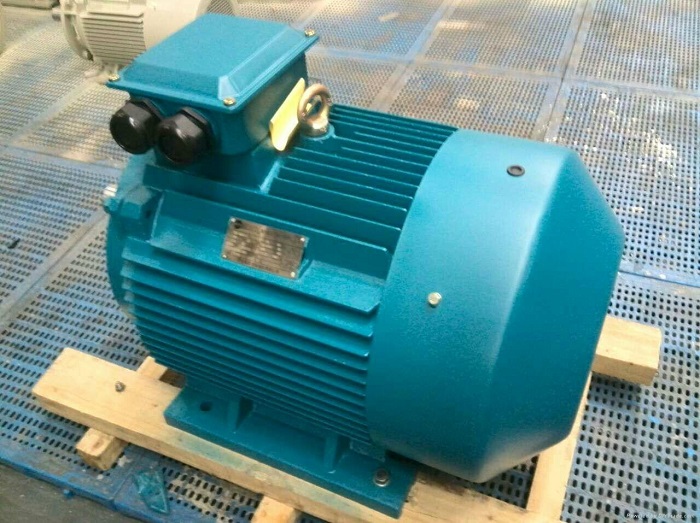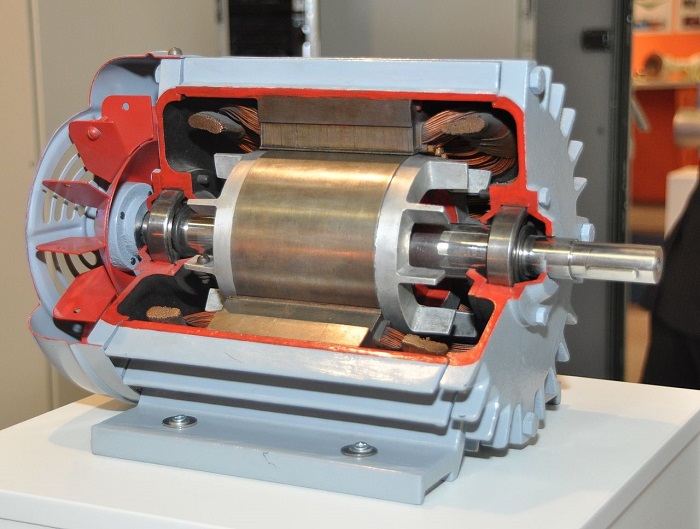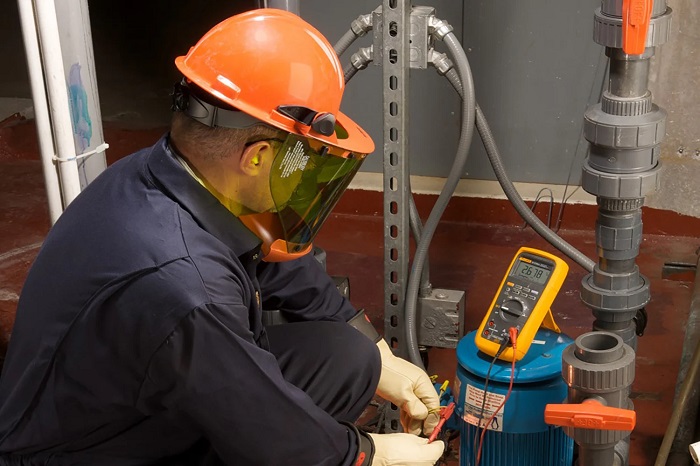Interested in learning about the Functions of an Induction Motor? A Induction Motor’s functioning principle and uses may be found here at Linquip. In search of a place to purchase Induction Motor Equipment? Visit Linquip’s Induction Motor For Sale, where you can see a complete list of all Induction Motor Products depending on your needs and application.
For your convenience, Linquip also provides a list of Induction Motor Suppliers and Companies from which you may select the best one. Linquip has a wide variety of Induction Motor Manufacturers who can help you discover the right equipment for your application. The best Induction Motor Service Provider businesses can also manage your industrial equipment service activities, such as the installation, maintenance, and repair of your industrial equipment.
An induction motor is the most modest electrical machine from a constructional point of view in the majority of cases. It is the most frequently used type of motor in residential, commercial, and industrial settings because these are rugged in construction hardly requiring any maintenance, they are comparatively cheap and require supply only to the stator. These motors can be designed to operate either on single phase or three phase power supply. In this article, we will discuss the single phase vs three phase motors. Read this new blog on Linquip to find out more about them.
What is the Difference Between Single Phase and Three Phase?
The flow of electricity in a single-phase connection is through a single conductor. A three-phase connection, on the other hand, is made up of three independent conductors that are required for electrical transmission. The voltage of a single-phase power supply system can exceed 230 Volts.
Single Phase Induction Motor
First, let us have a quick review of single phase and three phase induction motors before we dive into the differences between these two.
Single-phase motor is also known as residential voltage since it is more reliable and a better choice for driving small loads such as in appliances in homes and small businesses. It simultaneously changes the supply voltage of an AC power by a system. In the distribution of power, a single-phase uses the phase and neutral wires. Phase wire carries the current load, while the neutral wire provides a path where the current returns.
When the motor is connected to a single-phase power supply, the main winding carries an alternating current. A single phase motor requires extra circuits to work since a single-phase supply connecting to an AC motor doesn’t generate a rotating magnetic field. The power output of a single-phase supply is not constant, meaning its voltage supply rises and falls.
Three Phase Induction Motor
These types of motors are known as self-starting induction motors. These motors use no capacitor, start winding, centrifugal switch, or other starting devices. Three-phase induction motors find use in industrial and commercial applications. It provides three alternating currents, with three separate electric services. The power output of a three-phase power remains to be constant, and it never drops to zero. It requires four wires, namely one neutral wire and three-conductor wires. These three conductor wires are 120-degree distant from each other. Also, each AC Power Signal is 1200 out of phase with each other.
How to identify single phase and 3 phase motor:
Here are a few ways you can check to be sure which type you have:
- Check the motor nameplate data that is usually located on a paper or metal label attached to the side of the motor.
- Look at the number of electrical leads coming out of the motor. If your motor has three black leads and a green lead then it is likely three-phase. The three hot leads are usually labeled U, V, and W, and the final lead is labeled ground.
- Check for two wires for a single-phase or three to four wires for a three-phase.
- Check the voltage with a multimeter. A single-phase power supply should give you a reading of 230 volts, and your multimeter should give you a reading of 208 volts if it is a three-phase.
Single phase vs. three phase induction motor
The main difference between single-phase and three-phase is that single phase induction motors are not self-starting while the three phase induction motors are self-start. The differences between single-phase and three-phase induction motors are explained on the basis of the following practical factors.
Power supply
- The single-phase induction motor uses a single phase supply.
- The three-phase induction motor uses three phase supply.
Starting mechanism
- The single-phase motor is not self-starting, requiring external devices such as motor startups.
- The three-phase motor is self-starting, without requiring any external devices.
Efficiency and consumption
- According to single phase vs three phase motor power consumption and efficiency, the single-phase motor has low efficiency as only one winding has to carry all the current.
- The three-phase motor has high efficiency because three windings are available to carry the current. Three-phase motor supplies use less amount of electrical power than doing single-phase motor supplies.

Features
- The single-phase motor is simple in construction, reliable, and economical compared to three-phase induction motors.
- The three-phase motor is complex in construction and costly.
Maintenance
- The single-phase motor is easy to repair and maintain.
- The three-phase motor is difficult to repair and maintain.
Size (for same power rating)
- The single-phase motor is larger in size.
- The three-phase motor is smaller in size.
Structure
- The single-phase motor is simple and easy to manufacture.
- The three-phase motor is more complicated to construct because of extra components involvement.
Motor rotation
- In the single-phase motor, there is no mechanism to change the rotation.
- The rotation of the three-phase motor can be changed easily by changing the phase sequence in the stator.
Output voltage levels
- The single-phase motor delivers a voltage level of almost 230V.
- The three-phase motor delivers a voltage level of almost 415V.
Starting torque
- The single-phase motor offers a very limited starting torque.
- The three-phase motor offers very high starting torque.
Power rating
- The single-phase motor is made for low power rating usually below 5kW.
- The three-phase motor is made for power rating above 5kW.
Application
- According to the application of single phase and three phase induction motor, the single-phase motor mostly finds use in domestic appliances, and lighter loads such as blowers, vacuum cleaner, fans, centrifugal pump, washing machine, grinder, toys, electric shavers, drilling machines, compressor, etc.
- The three-phase induction motors are extensively employed in industrial and commercial drives since they are more rugged and economical in terms of operational efficiencies, such as lifts, cranes, hoists, large capacity exhaust fans, driving lathe machines, crushers, oil extracting mills, textile, etc.
Few other difference between single phase and three phase meter to keep in mind:
- A single-phase motor generates mechanical noise and vibration. Whereas, a three-phase motor operates smoothly with less noise.
- The copper losses of a single-phase motor are high due to a single winding carrying all the current. In a three-phase motor, the copper losses are low because windings share the current.
- The direction control of a single-phase motor is a little difficult, and it is changed by swapping the polarity of starter winding, while in a three-phase motor the direction control is simple, and it is done by swapping any two input phases.
- The single-phase motor has two terminals, and it requires only two wires to power it up, and the three-phase motor has three terminals and requires three or four (including neutral) wires to operate.
- The power factor of a single-phase induction motor is low, compared to that of a three-phase induction motor.
- Because of the peaks and dips in voltage, a single-phase power supply does not offer the same consistency as a three-phase power supply. A three-phase power supply delivers power at a steady, constant rate.
To sum up everything, choosing between a single-phase or three-phase motor is a question of your necessity, economy, and practicality. While you benefit from these two power supplies, always consider your practical need. For a real-life application, we suggest you choose a single-phase power for domestic and residential use. Nevertheless, while both single-phase and three-phase powers have palpable differences, you should always consider factors such as required wirings on the power supply, voltages, its place of utility, the efficiency of performance, and application to have a wise investment.
So, there you have a detailed description of the difference between single-phase and three-phase induction motors. If you enjoyed this article in Linquip, let us know by leaving a reply in the comment section. Is there any question we can help you through? Feel free to sign up on our website to get the most professional advice from our experts.
Buy Equipment or Ask for a Service
By using Linquip RFQ Service, you can expect to receive quotations from various suppliers across multiple industries and regions.
Click Here to Request a Quotation From Suppliers and Service Providers
Read More on Linquip
- What is AC Motor? Types, Principles and Constructions
- A complete Guide to The Difference Between Stepper Motor and DC Motor
- A Complete Guide To The Difference Between Brushless Motor and Brushed Motor
- The Simple Guide to Motor Efficiency: What It is and What to Do
- A Simple Guide to the Difference Between Motor and Generator
- The Only Guide You’ll Ever Need For The Working Principle of Induction Motor
- Working Principle Of DC Motor: Complete Guide
- DC Motor Efficiency: Calculation: Formula & Equation
- What is Capacitor Start Induction Motor: A Complete Guide
- What is Planetary Gearbox and How Does it Works?
- Differences Between Motor and Engine
- Everything About Switched Reluctance Motor
- The Good Guide to Types of Electric Motors






I am pleaed with your description/information provided keep up.
Thank you and Happy New Year.
Samson from Uganda.
Hi folks. Many thanks for this very informative article. I understand that the efficiency of a 3 phase motor is better than a single phase motor but I would like to find out by how much. Would you have you any figures please. A rough order of magnitude is enough for me.
Martin
a). Which Horse Power(HP) of single phase motor can run a milling or grinding machine?
b). Which phase seems expensive to purchase?
c). How many times can i rewind a motor?
d). How do i purchase power Units to run the motor, & how do i load the units?
The description on how motor work and it’s performance as been so good.
Thanks for visiting our website and leaving your comment, Peter! We hope to hear from you again in our other posts.